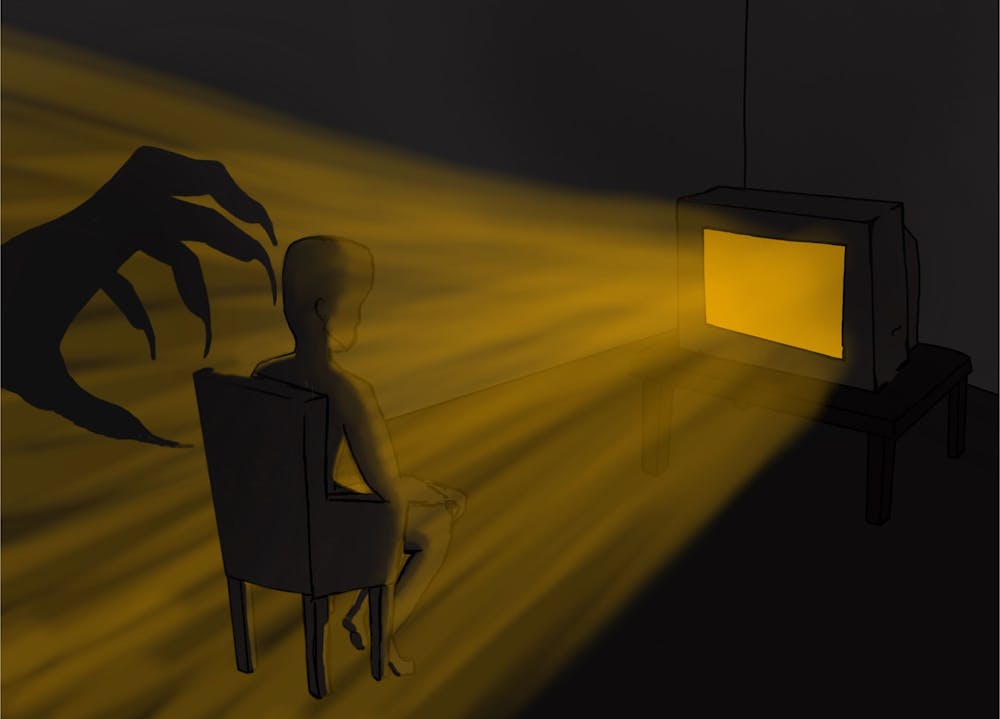As a second year, 2021 was my first real college Halloween. Since COVID-19 effectively cancelled any traditional celebrations the year before, I was thrilled by the promise of a more normal Halloween season this year. Determined to take advantage of the spooky spirit even in my down time, I decided that Halloween weekend 2021 would be my first time watching a horror movie. Albeit nervous, I eagerly anticipated the experience, having had my fears assuaged by a housemate, a true horror fanatic. She suggested Stanley Kubrick’s “The Shining,” convincing me that it wasn’t as scary as it seemed. Thus, I took the plunge — pressing play on our TV remote, and forever changing the way I view the horror genre.
“The Shining” took me by surprise, but not in the way I expected. I found myself more intrigued by the plot than terrified by the psychotic devolution of the film’s main character Jack Torrance. Kubrick’s cinematic techniques to enhance the audience’s viewing experience fascinated me. But, at the moment, I didn’t feel too scared. And yet, at the end of the movie, I was left on edge. I had spent the entire time analyzing artistic choices made by its director, and had somehow still been entirely perturbed by the film. Thus, I asked myself the following question — what makes a horror movie scary?
**Quick disclaimer — if you haven’t seen “The Shining” yet and don’t want the ending to be spoiled for you, I would suggest watching it before reading any further.**
While watching “The Shining,” I felt a certain amount of melancholy. I quickly grew attached to Jack’s wife, Wendy Torrance, and her young son Danny Torrance. As the husband and father Jack Torrance commits the family to a winter spent isolated in the Overlook Hotel, my prior knowledge of the film led me to mourn Wendy and Danny before they had even arrived at the hotel. Aided by iconic scenes such as that of blood spilling out of the hotel’s elevators and twin girls prompting Danny to “come play with [them],” a growing feeling of dread grew in my stomach — Wendy and Danny weren’t going to make it out of the Overlook alive.
However, when the movie came to a close, I was taken aback — Jack Torrance, driven insane by the dark forces at the hotel, hadn’t managed to kill Wendy or Danny like past caretakers of the Overlook. As the two characters drove to safety, leaving Jack frozen in the snow behind them, I was perplexed. That for which I had braced myself had never come to pass.
So, why did the movie still scare me? It didn’t include nearly the level of gore or violence I had anticipated, nor detailed descriptions of supernatural evil. The main characters even get away! While watching YouTube theories after the movie, I came to realize that perhaps it’s not the substance of a horror movie that we perceive as creepy, but the questions they leave behind. While Kubrick hadn’t convinced me to fear blood-filled elevators or haunted hotels, he had led me to think more deeply about the relationships between humans, their sanity, the past and our families. The scary part about Jack’s devolution to obeying the will of the Overlook isn’t only the mysterious influence of the hotel, but the ease with which he submits to historic patterns of violence, thus turning on his wife and child. Just as “The Shining” confuses the boundaries of reality in the Overlook, it prompted me, as well, to ask myself if the plot of the movie was truly fictional, or based in real truths.
Thus, I’ve come to believe that a good horror movie must strike the balance between fiction and reality — far-fetched enough that its viewers can’t make sense of its events, real enough that it leaves them with the question — “could that happen in real life?” Undertones that remind audiences of their own realities, such as alcoholism, patterns of repeated violence or violent or immoral histories, combined with terrifying consequences, produces fears that are both personal and extreme — and thus, hard to shake.
Perhaps this is why the cheesy horror movies of the past no longer resonate with modern audiences. Because we no longer fear undiscovered people groups here on Earth, “Invaders From Mars” failed to remind us of our own anxieties. However, in films such as Jordan Peele’s “Get Out,” the indictment of modern issues such as the larger implications of continued systemic racism prey on deeper dread than just that of secret societies such as that which appears in the film.
So, next time I watch a horror movie, I anticipate that I’ll be both comforted and unnerved by the possibility that what I was scared by was, perhaps, already there to begin with.
Caitlyn Kelley is a Life Columnist for The Cavalier Daily. She can be reached at life@cavalierdaily.com.







